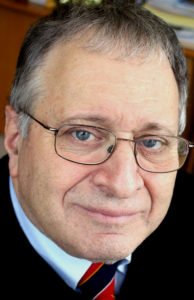LIFE IN THE TIME OF COVID-19
Navigating Without a Compass

One thing is very clear when dealing with a pandemic, it is very important to have good statistics in order to determine a plan of attack. Without good numbers it’s hard to say what to do next. It’s also important to understand what these numbers mean.
With COVID- 19, it has proven difficult to determine its morbidity and mortality rate and its infectivity. Additionally, we’re not sure exactly what the tests that are being done mean. There’s a great deal of controversy about accuracy, especially about the antibody test which shows people who have the disease.
•
Some people die of the disease. Many of these people have pre-existing conditions. This is obviously common in elderly people. Some people have absolutely no pre-existing conditions and are dying of COVID-19 solely. Many people who contract the infection will survive it but may have long-term health consequences.
We have no idea what this percentage will turn out to be. Some people contract the virus that are totally asymptomatic. They have no illness at all. Unfortunately, they are probably still contagious and can infect others who become symptomatic.
When we have good numbers of the size of a population, the number of people affected, number of people who die, and the number of people who develop permanent medical problems, we can start to develop good plans.
•
Unfortunately, we now recognize that we don’t have a good handle on these basic statistics.
We were able to determine what percentage of those who were tested and confirmed with COVID-19 died. The problem with that is many people who died during this period went unrecognized as having
COVID-19 because the algorithm to decide who would be screened did not recognize that most infected people wouldn’t have classic symptoms. This makes the statistic of the percentage who died unreliable.
In Italy, it initially looked like 10 percent of the victims were dying. In Germany, it looks like less than 1 percent of the victims are dying. In the United States it looks like at least 5 percent die.
To figure out the real infection, fatality and morbidity rates, we are going to have to know the size of the population, what percentage of the population actually contracted the disease, and what percentage was symptom-free.
•
A study in New York City, which Governor Cuomo frequently refers to, shows that approximately 20 percent of the population have antibodies to COVID-19, which indicates that they were infected and implies that they have some level of immunity even if only temporary.
The official numbers of New York City are approximately 204,000 cases and 16,400 deaths. This represents a fatality rate of approximately 8 percent. But there seems to be a number of patients “missing”: 20 percent of 8 million is 2 million. Where are the missing 1.8 million cases?
If we take the number of deaths and divide that by the total number of cases, assuming those numbers are close to accurate, we get 16,400 divided by 2 million. Which is only 0.8 percent. This has to be adjusted for the deaths that haven’t been officially determined.
It appears that the disease is more prevalent and a lower mortality rate than initially thought. It also appears that as much as 90 percent of the population infected are not diagnosed.
•
A retrospective research paper that I read from a specialty hospital in New York City showed that otherwise healthy patients that were scheduled for surgery in April 2020 and did not warrant testing had an infection rate of approximately 12 percent, of which 58 percent remained asymptomatic even with the stress of surgery.
Whether it is determined by statistical methods or by formal scientific studies it is clear that a very significant percentage of patients with COVID-19 never show symptoms.
In summary, it’s clear that we do not have very good statistics which makes it more difficult to make informed decisions.
Hopefully, the statistics will improve. But the important point to take away from this is, regardless of the percentage who have the disease, a large number of people are dying from it.
Even if the fatality rate is only 0.5 percent, if we don’t get a vaccine, we can expect 70 to 80 percent of the population to contract the disease, which in the United States would be more than 200 million people and therefore 1 million people will die.
Let’s hope we can keep the curve flat until a vaccine is found.

